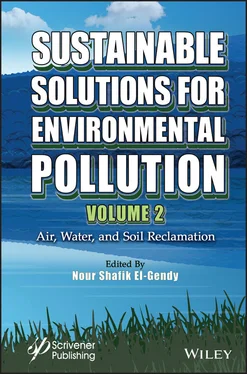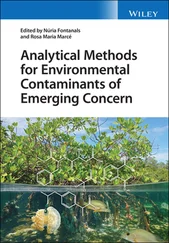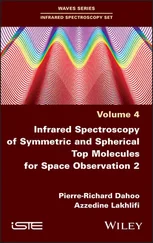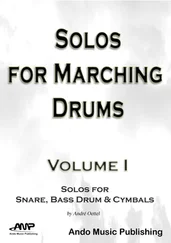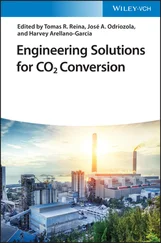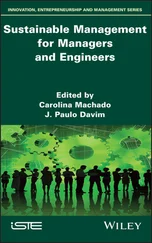Sustainable Solutions for Environmental Pollution, Volume 2
Здесь есть возможность читать онлайн «Sustainable Solutions for Environmental Pollution, Volume 2» — ознакомительный отрывок электронной книги совершенно бесплатно, а после прочтения отрывка купить полную версию. В некоторых случаях можно слушать аудио, скачать через торрент в формате fb2 и присутствует краткое содержание. Жанр: unrecognised, на английском языке. Описание произведения, (предисловие) а так же отзывы посетителей доступны на портале библиотеки ЛибКат.
- Название:Sustainable Solutions for Environmental Pollution, Volume 2
- Автор:
- Жанр:
- Год:неизвестен
- ISBN:нет данных
- Рейтинг книги:3 / 5. Голосов: 1
-
Избранное:Добавить в избранное
- Отзывы:
-
Ваша оценка:
- 60
- 1
- 2
- 3
- 4
- 5
Sustainable Solutions for Environmental Pollution, Volume 2: краткое содержание, описание и аннотация
Предлагаем к чтению аннотацию, описание, краткое содержание или предисловие (зависит от того, что написал сам автор книги «Sustainable Solutions for Environmental Pollution, Volume 2»). Если вы не нашли необходимую информацию о книге — напишите в комментариях, мы постараемся отыскать её.
This second volume in a broad, comprehensive two-volume set, “Sustainable Solutions for Environmental Pollution”, concentrates on air, water, and soil reclamation, some of the biggest challenges facing environmental engineers and scientists today.
AUDIENCE: Sustainable Solutions for Environmental Pollution,
Sustainable Solutions for Environmental Pollution, Volume 2 — читать онлайн ознакомительный отрывок
Ниже представлен текст книги, разбитый по страницам. Система сохранения места последней прочитанной страницы, позволяет с удобством читать онлайн бесплатно книгу «Sustainable Solutions for Environmental Pollution, Volume 2», без необходимости каждый раз заново искать на чём Вы остановились. Поставьте закладку, и сможете в любой момент перейти на страницу, на которой закончили чтение.
Интервал:
Закладка:
1.6.2 Aquatic Vegetation
Suitable vegetation for water treatment needs to be considered, depending on the type of water being treated, the tolerance of the vegetation, and the climatic conditions. Vegetation serves a variety of functions in CWs. It slows down the HLR, thereby increasing HRT for efficient water treatment. Large success has been reported in the usage of wetlands in farm waste-water treatment plants, with aquatic vegetation such as cattails ( Typha spp.), bulrush ( Scirpus spp.), and phragmites ( P. australis ) used to treat water. Phragmites australis is a very popular as emergent aquatic plant for waste-water treatment CWs. In addition, vegetation provides habitat to wildlife and gives the CW an attractive aspect (Brix, 1994).
1.7 Phytoremediation and Constructed Wetlands
Phytoremediation sensu lato (aka plant-assisted bioremediation or phytotechnology, including phycoremediation) uses macrophytes and related phytobiome to clean up environments. These technologies are environmentally friendly and cost-effective and do not require sophisticated equipment, to manage contaminated water (Krzeminski et al. , 2019).
1.7.1 Phytoremediation Techniques
Phytoremediation encompasses many phyto-techniques and processes involving macrophytes and the associated phytobiome. Depending on the main process involved, we will refer to phyto-degradation/phyto-transformation, phyto-stabilization/phyto-sequestration, phyto-accumulation/phyto-extraction, phytovolatilization, and rhizo-filtratio/phyto-filtration ( Figure 1.5).
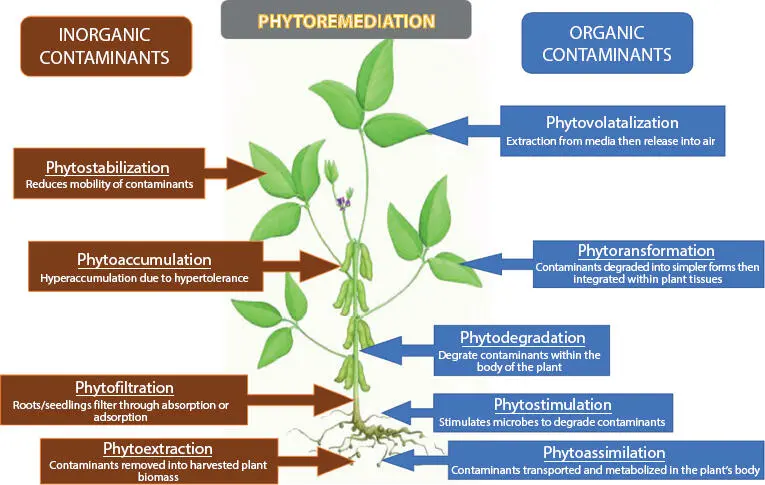
Figure 1.5 Various processes involved in phytoremediation of contaminants in aquatic environment interpreted from Ansari et al . (2020).
In aquatic systems, macrophytes promote the oxygenation of sediment and favour purification processes by enhancing and diversifying microbial activities through its rhizosphere. Moreover, various parts in macrophytes hyper-accumulate contaminants by absorption (phytoextraction) (Rulkens et al. , 1998). Some macrophytes have the ability to consume and volatilize the contaminants directly into the atmosphere through the leaves. Phyto-volatilization process is cost effective in elimination contaminants from soils, groundwater, residues, and sludge (Girdhar et al. , 2014). Rhizo-filtration involves adsorption and precipitation of the metal contaminants into the growth substrate surrounding the root zone. Moreover, macrophytes are in constant interaction with their phytobiome: their roots secrete specific exudates and compounds, which attract some specific microbial communities, and develop a thick coating or biofilm around them (rhizosphere). Because of its various physical- chemical conditions, creating various microbial growth niches, the rhizosphere accommodates various microbial consortia, and it can, even in surrounding aerobic conditions, host some anaerobic consortia, such as denitrifying, sulfate-reducing, and methanotrophic bacteria (Shahid et al. , 2020b).
1.7.2 Aquatic Phytobiome
The phytobiome consists in the community of micro-organisms, fungi, protists, invertebrates, and other plants, in more or less mutualistic or symbiotic way, associated with plants (Leach et al. , 2017). Unique physiological and anatomical adaptations in the root system of wetland plants exist, allowing them to exploit the light, water, and nutrients. The adapted wetland plant roots are surrounded by a rhizosphere, which attracts by its water, oxygen, and nutrients a myriad of wetland organisms. Phytobiome plays a major role in phyto-technology.
The wetland macrophytes rhizosphere hosts large quantities of rhizospheric bacteria and archaea involved with nutrient transformation (Vymazal, 2011). Endophytic bacteria reside in various root tissues where they play an essential role in macrophytes, supporting them by providing critical nutrients such as nitrogen and phosphorus and other essential ones such as potassium in an easy-absorbable form (Cuellar-Bermudez et al. , 2017; Shahid et al. , 2020b). Rhizospheric and endophytic microorganisms are both essential in macrophytes growth promotion and phytoremediation. In tandem, they contribute to the fight against mixed contamination by biodegradation and sequestration of metals through a reciprocal support between macrophytes and their associated phytobiome (Shahid et al. , 2020b). Much of the wetlands N-metabolism occur at or near the rhizophere. Wetland macrophytes roots influence bacterial processes in the outer region of their rhizosphere by modifying the availability of substrates and by providing oxygen and degradable OM (Bardgett and van der Putten, 2014). Fungi associate intimately with roots in macrophyte rhizospheres and thereby influence prominently wetland functioning and phytoremediation. The fungal and wetland plant associations perform several specialized functions, such as Fe nutrition and metal detoxification (Wenzel, 2009). Protozoa are widespread: their feeding on roots and microorganisms enhances the nutrient cycling through the microbial loop as well as it facilitates the passage of nutrients and energy up the food chain (Dart, 1990). In wetland soil, invertebrates are attracted to rhizosphere for oxygen and food. The rhizosphere invertebrates consume biota, flora, and root tissue, modifying the microbial biogeochemical processes, recycling nutrients, and influencing plant growth which is making them important for phytoremediation (Du et al. , 2014). Finally, viruses profoundly influence the aquatic communities and bio-geochemical cycles of wetlands. Their role in the microbial loop and as pathogens can make viruses crucial to the function of wetland vegetation (Raven, 2006).
1.7.3 Various Aquatic Plants Used
Aquatic plants are plants whose entire life cycle is dependent on the aquatic environment (water or waterlogged soil). This category of plants includes algae, bryophytes, and some vascular plants that do not usually produce real roots because they can directly take the necessary nutrients from the water. Some of them produce rhizomes that store energy for the next season. Whether in the laboratory by hydroponic culture or in the field, various species of aquatic plants have been identified and recognized for their effectiveness in accumulating and degrading mineral and organic contaminants in water (Prasad, 2007). In order to achieve the best results in decontamination of pollutants the aquatic macrophytes should be selected upon their efficacy to accumulate dissolved nutrients, metals and other contaminants (Lu, 2009). The selected aquatic plants should be fast growing, easily to handle and to harvest (De Stefani et al. , 2011). The severity of the pollution is another factor that might affect the success of a phytoremediation system. From a functional ecology point of view, a distinction is made between emergent, floating leaved, free-floating, and submerged aquatic plants. If emergent macrophytes are found in subsurface and surface-flow CWs, then the other types of macrophytes are exclusive to surface flow systems.
1.7.4 Emergent Aquatic Plants
Because of its large spread in natural habitats as well as its large use in CWs, P. australis is the emergent macrophyte, whose phenology has been probably the most extensively studied. Its yearly cycle begins with the start of growth, corresponding to start of the remobilization of resources (C, N, and P) stored in the rhizomes, when the accumulated degree days is high enough. Photosynthesis is taking place from the start of the growth, until the start of the senescence, after flowering. At that time, the resources are reallocated to the rhizomes and the plant starts decaying. The full decaying process is quite long (2 or more years), due to the silica content of the aboveground biomass [≈18 mg/g dry weight (Gao et al. , 2019)]. By leaching of the decomposing litter, C, N, P, as well as minerals stored in the biomass are slowly released to the aquatic environment. Typha sp., P. arundinacea , Scirpus sp., and G. maxima are other groups of emergent plants, whose phenology is similar to Phragmites .
Читать дальшеИнтервал:
Закладка:
Похожие книги на «Sustainable Solutions for Environmental Pollution, Volume 2»
Представляем Вашему вниманию похожие книги на «Sustainable Solutions for Environmental Pollution, Volume 2» списком для выбора. Мы отобрали схожую по названию и смыслу литературу в надежде предоставить читателям больше вариантов отыскать новые, интересные, ещё непрочитанные произведения.
Обсуждение, отзывы о книге «Sustainable Solutions for Environmental Pollution, Volume 2» и просто собственные мнения читателей. Оставьте ваши комментарии, напишите, что Вы думаете о произведении, его смысле или главных героях. Укажите что конкретно понравилось, а что нет, и почему Вы так считаете.
